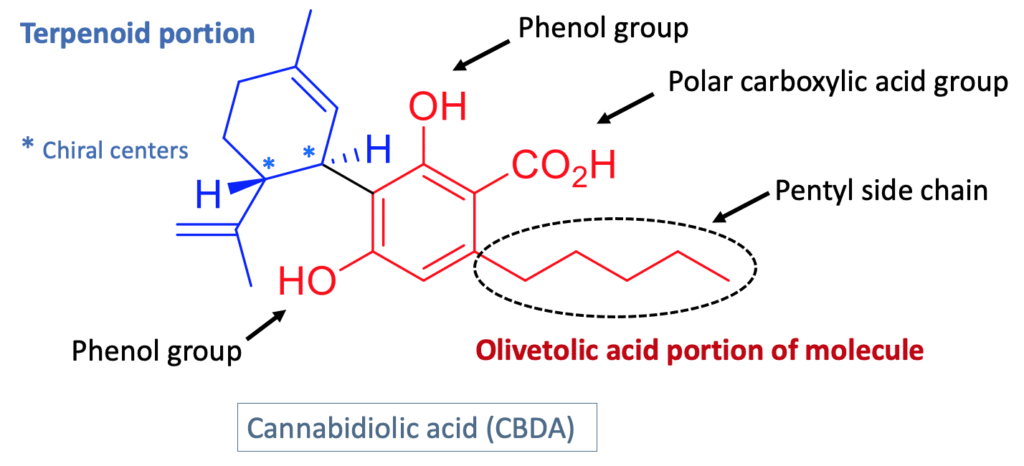What is the most cost-effective cannabinoid manufacturing method?
Learn about the factors that impact the cost of manufacturing synthesized cannabinoids.
Manufacturing cannabinoids synthetically – via biosynthesis, synthetic chemistry or other methods – can be a cost-effective alternative to the traditional ‘plant-grow-harvest-extract’ technique most commonly used today to access the major cannabinoids, THC and CBD. Synthesized cannabinoids can provide the quality, purity and consistency needed for pharmaceutical and consumer products at large scale.

No ‘one size fits all’ approach to cannabinoid manufacturing
When it comes to cannabinoid manufacturing, there is no ‘one size fits all’ approach. To select the most suitable cannabinoid manufacturing method, the following criteria need to be considered:
- Which cannabinoid is being made and how complex is its structure?
- What is its intended use and what level of quality is needed for this use?
- What quantity is needed?
Depending on the chemical structures of the targeted cannabinoid, it may be more cost-effective to use one specific synthetic method over another to ensure purity, quality, and adequate supply. While cannabinoids may seem quite similar in structure, the slightest structural difference can have a bearing on which manufacturing method is most efficient.
A need for alternative methods to traditional plant extraction of Cannabis
Companies are turning to cannabinoid synthesis to access sufficient quantities of rare cannabinoids with the necessary consistency, quality and purity. A number of different cannabinoid synthesis methods are being explored, many adapted from the pharmaceutical industry:
- Chemical synthesis involves the combination of starting materials / reactants to produce the selected cannabinoid molecule via a chemical reaction(s).
- Biosynthesis entails genetically engineering a microbe, such as bacteria or yeast, to become the living factories to produce the molecules.
- IntegraSyn™ is InMed’s unique approach to cannabinoid manufacturing. InMed has created genetically engineered microbes that produce proprietary high efficiency enzymes, which are then used to optimize subsequent biotransformation reactions.
Chemical synthesis can be cost effective for less complex molecules, but this method may not produce bioidentical cannabinoids of complex structure. Chemical synthesis is generally the method of choice for purity and consistency, especially for applications that require Good Manufacturing Practice (GMP) standard of quality for pharmaceutical products.

What are the differences in each synthetic cannabinoid manufacturing method?
Advantages and disadvantages in cannabinoid manufacturing approaches

What affects the cost of cannabinoid manufacturing?
To make rare cannabinoids commercially viable products, a high yielding and cost-effective method is required. What impacts the cost and yield of synthesized cannabinoids? A number of components can impact the cost of cannabinoid manufacturing, including:
- Cost of starting materials – What are the building blocks needed to run the manufacturing process? Selecting the most cost-efficient substrates, or starting materials, and optimizing the use of these sophisticated starting materials can greatly reduce the overall manufacturing cost.
- Efficiency of materials used – How effective are the enzymes at combining the starting substrates to produce the desired cannabinoid? To generate a higher yield level, it’s important to produce a high efficiency enzyme to be used in the bulk cannabinoid manufacturing downstream process.
- Number of manufacturing steps – How many manufacturing steps are required? As expected, additional steps in the manufacturing process likely result in longer processing time and more materials used.
- Nature of manufacturing process – How complicated are the process steps? The complexity of the process also results in a longer manufacturing time and additional GMP requirements. Finding efficiencies in the manufacturing steps is key to reducing the manufacturing costs.
- Length of manufacturing process – How long does the process take? Minimizing the length of the manufacturing cycle allows for greater volume of product in any given time period and optimizes the use of equipment.
- Required standard of finished product – Is this a wellness, functional food or pharmaceutical product? What is the cost differential to manufacture to each of those different standards? The level of quality and purity needed will depend on the use of the product. There are different GMP standards for different product types. Pharmaceutical standard, for therapeutic use, is the most stringent and the standards required are the most costly to achieve.
- Yield level – How much product is made from the process? How much product is lost during purification? The yield is dependent on the conversion of the starting substrates to the final product and varies from cannabinoid to cannabinoid. If there is double the yield level using the same materials and length of time, there is 200% more product at the same cost of manufacturing.

How does cannabinoid yield impact the cost of manufacturing?
The cannabinoid yield is typically expressed as a percentage of final product per batch and may be calculated as an amount of cannabinoid per liter of reaction solution. Higher is better. A higher titer (cannabinoid concentration) reduces the overall solution volume required to be removed during the purification and results in a lower cost of goods. This is a key measurement in determining the commercial viability of the cannabinoid manufacturing method.
When yield is higher, cost savings are realized throughout the manufacturing process. For example, to produce a 10kg batch of a target cannabinoid:
- Biotransformation vessel working volume reduced from 5,000L to 2,000L due to higher final yield of cannabinoid.
- Use of substrates and reagents are reduced under controlled process conditions to provide for improved cannabinoid production.
- At the lower solution volume, the capacity of the purification equipment required is significantly reduced to provide the increased batch size.
- Due to the smaller biotransformation volumes, the overall batch-to-batch turnaround time is reduced and production efficiency improved via equipment utilization and reduced time in plant.
The above noted details result in significant cost savings per batch and greatly increases the viability and competitiveness of the process.
Process optimization leads to greater cannabinoid yields and lower costs
InMed’s recent optimization of the IntegraSyn™ process demonstrates how fine tuning the process can greatly increase yield and, in turn, reduce the overall cost. InMed’s IntegraSyn™ cannabinoid yield of 5 g/L has evolved in a short period of time to a 2.5X increase in cannabinoid output from earlier titer of 2 g/L, which was already a commercially viable yield. That’s 250% more cannabinoid product using the same process and materials, and the evolution in increasing yields continues.

Cost-effective cannabinoid manufacturing will play a key role in accessing the benefits of these compounds as pharmaceutical, wellness, and functional food products. Before we can realize this potential, the production cost of cannabinoids, particularly rare cannabinoids, must be reduced to make them a viable ingredient for consumer use.
Plant extraction is practical for major cannabinoids such as tetrahydrocannabinol (THC) and cannabidiol (CBD), but not rare cannabinoids
With the natural abundance of tetrahydrocannabinol (THC) and cannabidiol (CBD) in the Cannabis plant, extraction and purification of the cannabinoid(s) is the most common and practical method of production. THC and CBD may be present in upwards of 20% of the flower biomass. However, plant extraction is not practical to access rare cannabinoids due to their very low levels in the plant.
There are more than 100 rare cannabinoids in the cannabis plant and, together, they account for less than 1% of the plant biomass. Research indicates that some of these rare cannabinoids may hold therapeutic benefits over THC and CBD. Even slight differences in the structure of these cannabinoids can result in profound differences in biological activity and potential therapeutic effect in the human body.
InMed is currently developing one such rare cannabinoid: cannabinol, or CBN. InMed conducted a number of studies comparing CBN against other cannabinoids, including THC and CBD, and CBN outperformed these major cannabinoids as well as a panel of other rare cannabinoids in its potential to affect disease pathways in glaucoma.

Molecular structure of cannabinoids can impact the complexity of manufacturing
Can you produce bioidentical cannabinoids using synthetic methods?
Absolutely! For compounds with complex structures, biosynthesis can produce bioidentical cannabinoids of the desired structure and may be suitable for wellness products, functional food and beverage or other consumer cannabinoid products if GMP is not required. Cannabinoids produced via biosynthesis can be GMP quality with the proper controls and regulatory requirements in place as well.
While traditional biosynthesis and chemical synthesis focus on production of one cannabinoid from start to finish, InMed’s IntegraSyn™ approach provides flexibility to shift production from one cannabinoid to a range of cannabinoids. This modular approach places less burden/work on the fermentation microbe and allows for the use of different enzymes and starting materials, leading to optimized yield and reduce time and cost.

IntegraSyn™ produces industry-leading cannabinoid yield of 5g/L
InMed’s IntegraSyn™ has become the industry leader in cannabinoid yield, achieving a yield of 5g/L, significantly exceeding currently reported industry yields. In addition to reaching a high titer, economies of scale are expected to further reduce manufacturing time and costs. InMed is looking at further optimization of IntegraSyn™ with an aim to achieve even greater yield levels at its next stage of large-batch production.










